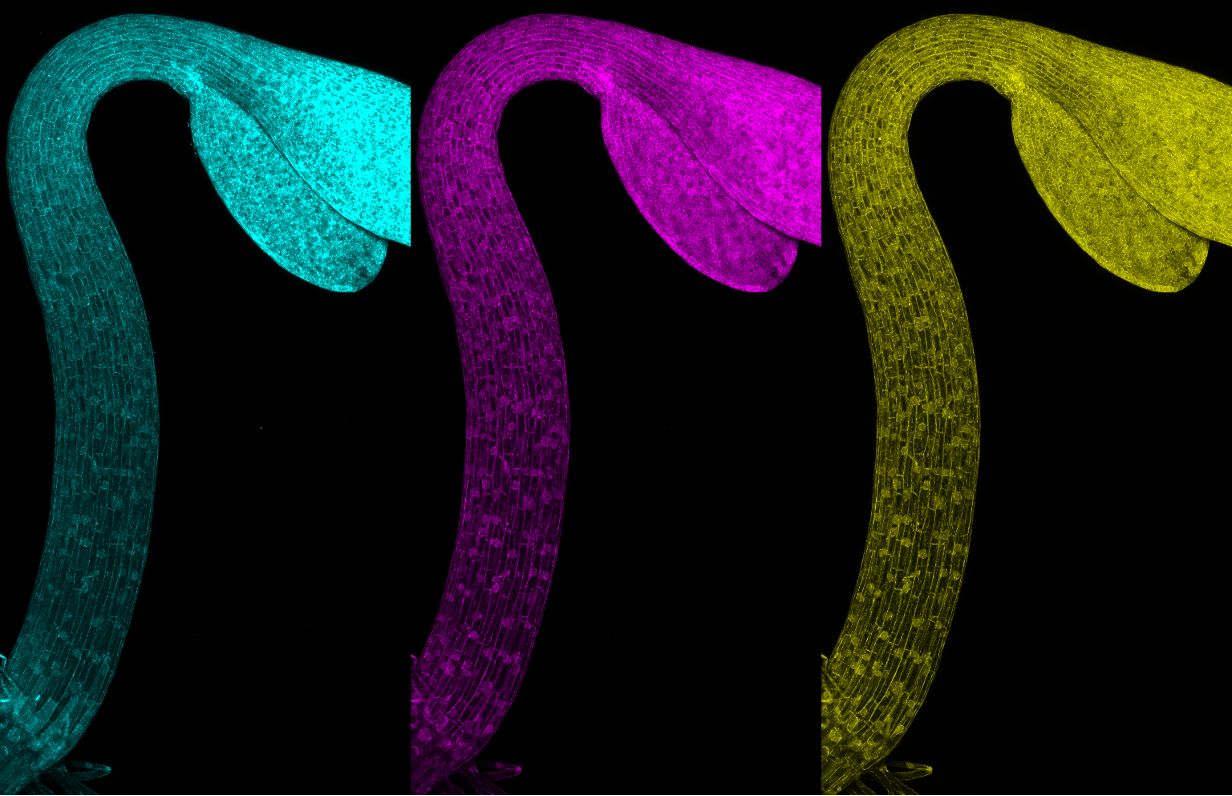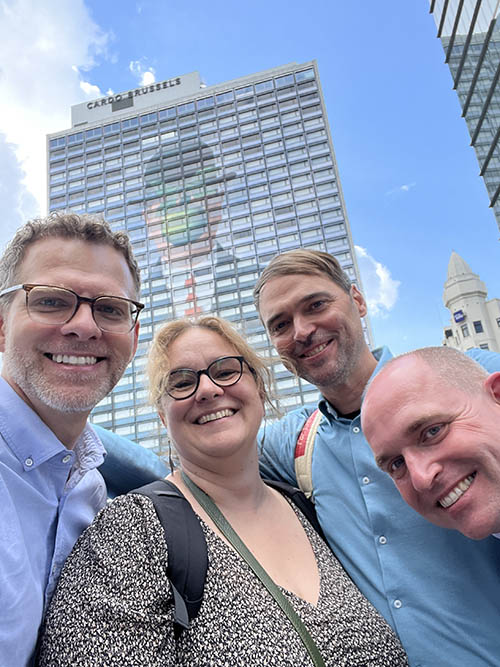
STARMORPH: SpatioTemporal Auxin Redistribution for Morphogenesis
We are recruiting!
We are looking for two new team members to join the Jones Group:
- Research Assistant in Auxin Biology (closes 8 October 2025)
- Research Associate (Postdoc) in Auxin Biology (closes 7 October 2025)
Both roles are part of the ERC-funded STARMORPH project and focus on auxin dynamics during plant organ morphogenesis. If you are interested in joining us, please get in touch with Dr Alexander Jones.
Creating a spatio-temporal map for auxin dynamics
The STARMORPH project (SpatioTemporal Auxin Redistribution for Morphogenesis) is a €10 million ERC Synergy Grant collaboration between four leading research groups:
- Alexander Jones (Sainsbury Laboratory, University of Cambridge, UK)
- Stéphanie Robert (Swedish University of Agricultural Sciences, Sweden)
- Ondřej Novák (Institute of Experimental Botany, Czech Academy of Sciences, Czech Republic)
- Jürgen Kleine-Vehn (University of Freiburg, Germany)
Together, the consortium is investigating how plant hormones and mechanical forces interact to shape developing plant organs. Central to this is auxin, a molecular signal that orchestrates growth across scales – from subcellular dynamics to organ-level morphogenesis.
This interdisciplinary project brings together expertise in plant biology, cell biology, synthetic biology, genetics, biophysics, and organic chemistry. By examining plant growth from molecular to organ scales, the team hopes to revolutionise our understanding of plant development, opening new avenues for biotechnology and plant engineering.
Project Aims
Plant development is a dynamic process. Unlike animals, plants continuously remodel their body plans in response to environmental change. Auxin is a central coordinator of this plasticity, creating gradients that guide when and how cells expand, divide, or remain dormant.
STARMORPH introduces the innovative concept of an “auxin signature” – a way to describe auxin distribution across tissues, cells, and even specific subcellular compartments. This approach integrates auxin dynamics with cellular responses to developmental and environmental cues.
The project aims are to:
- Create the first subcellular map of auxin dynamics during plant organ growth.
- Identify missing regulators upstream of environmentally responsive auxin behaviour.
- Use genetic screens and biosensors to precisely redistribute auxin in space and time.
- Test how auxin-driven growth interacts with mechanical constraints in tissues.
Approach
The Jones Group contributes a suite of highly sensitive biosensors to the project, including newly developed FRET-based auxin sensors that allow real-time, in vivo visualisation of auxin and other hormone dynamics.
By combining these biosensors with genetics, computational modelling, biophysics, and synthetic biology, the STARMORPH team is building a spatio-temporal framework for how auxin patterns organ growth.
A key focus of the collaboration is the Arabidopsis thaliana apical hook, a simple yet powerful model for studying dynamic morphogenesis.
Watch Dr Jones discuss auxin dynamics and STARMORPH in a recent seminar (YouTube)
Why it Matters
Understanding auxin’s “signature” could revolutionise plant science by providing the missing link between hormonal signalling and tissue mechanics. This knowledge is crucial for:
- Developing new breeding strategies for agriculture and forestry.
- Improving how plants allocate resources to harvested organs.
- Engineering plants with enhanced growth, productivity, and resilience.
“A key challenge is deciphering these differential growth programmes while accounting for the mechanical constraints imposed by plant tissues. Central to this process is auxin, but the mechanisms behind its complex behaviour remain unexplained.”
Dr Alexander Jones
Funding
The ERC Synergy Grant scheme supports collaborative projects tackling some of the world’s most pressing scientific challenges. The ERC Synergy Grant is a funding initiative designed to support small teams of scientists tackling significant research issues for some of the world’s most pressing research challenges across various scientific disciplines.
The scheme encourages researchers to combine their diverse skills, knowledge, and resources, fostering collaboration that leads to innovative scientific inquiries and the development of new methods and techniques. This grant scheme is part of the European Union's research and innovation program, Horizon Europe.
For more details visit https://erc.europa.eu



